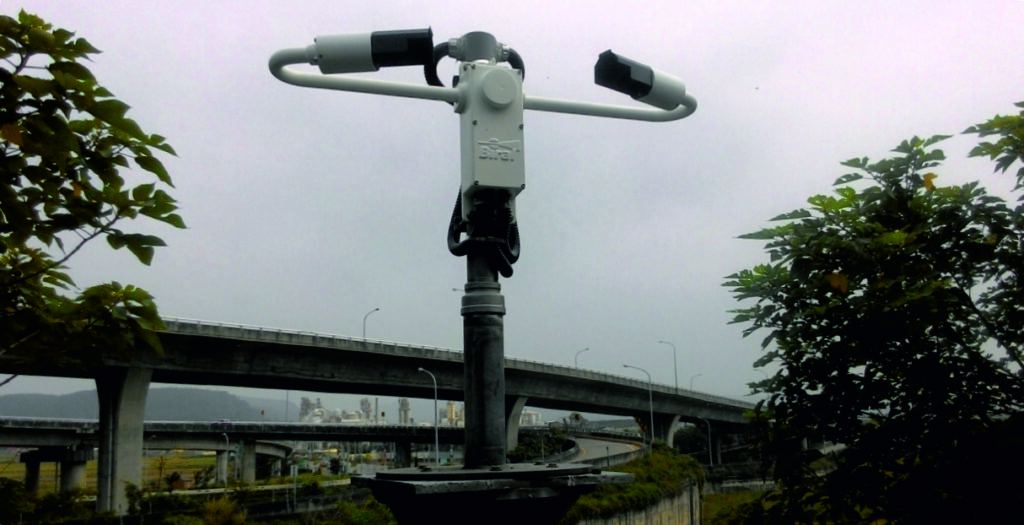Overview
The SWS-100 is optimised for use in applications where accurate and reliable visibility measurements are required alongside basic present weather measurements. The forward scatter measurement principle and unique design ensure the output is both accurate and reliable in all weather conditions and will not be influenced by local lights sources, even those that flash.
The availability of digital, analogue and switching relay outputs provides the flexibility to connect to a wide range of ITS (Intelligent Transport Systems), computer systems or local warning devices.
The unique ability to switch equipment using two fog relays and/or a precipitation relay is a feature of the SWS-100 sensor. For example; you can set the relays to automatically switch a speed reduction sign when the visibility is below 100 meters and then switch an additional ‘danger of aquaplaning’ alert when rains starts.
Full compliance with the visibility measurement requirements of the International Civil Aviation Organisation Runway Visual Range specification and easy integration of the Biral ALS-2 ambient light sensor makes the SWS-100 perfect for use in aviation applications where RVR data is needed.
- 10m to 99.99km measurement range (other ranges available)
- Compact forward scatter design
- Hood heating for use in extreme environments
- Window heating and contamination monitoring
- Analogue voltage and relay outputs
- Optional analogue current output
- Comprehensive self-test capabilities
- Serial data output (RS232, RS422 or RS485)
View our videos about the SWS-100 Visibility Sensor


Technical Description
The SWS-100
The 45° forward scatter angle and 850nm infrared light source used by the SWS-100 provide the best possible visibility measurement accuracy in all weather conditions. Visibility is output as Meteorological Optical Range (MOR) whilst World Meteorological Organisation (WMO) Table 4680 codes are used to report present weather.
In common with all Biral visibility and present weather sensors the SWS-100 uses 2kHz modulation of the light source combined with narrow pass band optical filters and synchronous detection at the receiver to ensure the measurement is not affected by bright or flashing lights. This design also ensures the sensor accurately reports visibility during precipitation whilst allowing the accurate reporting of drizzle, rain and snow. The horizontal hood design eliminates the problems caused by surface reflections that are a source of error in sensors employing look down hood geometries.
The sensor hoods are optionally fitted with heaters to ensure blowing snow does not block the optical path. The hood heaters have their own supply connection allowing the use of unregulated supplies which can help to reduce installation costs. The hood heating only operates when the temperature drops below 4°C and can be disabled through the sensor interface if required.
The optical windows of the sensor are fitted with low power heaters to prevent the formation of condensation. Window contamination monitoring and compensation allows the visibility output to maintain its accuracy even as dirt builds up on the optical surfaces. The sensor reports the window contamination in the output message using two stages of warning flags allowing cleaning to take place in a convenient manner.
Communication with the sensor is over a serial data link that is user configurable for RS232, RS422 or RS485 signal levels. ASCII encoded data is used and the sensor can operate in either a polled or broadcast modes. The data message can include a time stamp from the internal real time clock in addition to the standard visibility, present weather and basic self-test information. The sensor is supplied with two user configurable threshold relays and one fault relay. One threshold relay can be configured to report the presence of precipitation.
The sensor operates from a low voltage DC supply and requires just 3.5W. The low power window heaters that can be set to only operate when condensation is detected take an additional 1.7W. The higher power hood heaters are supplied separately allowing the use of an unregulated heating supply.
The SWS-100 is a single lightweight unit that can be easily installed by one person. The sensor enclosure is constructed from aluminium which is surface passivated and finished with a white powder coat paint. It is designed for use in all types of weather and has a wide operating temperature.
Specifications
Product Video
Downloads
Sales & Support
Contact Biral for more information
To find out more about this instrument or to discuss your application requirements please do not hesitate to contact Biral.
- Complete our enquiry form
- Email enquiries@biral.com
- Telephone +44 (0)1275 847787
After Sales Support
Biral offers free advice and technical support for the lifetime of the instruments we sell. Once you have purchased the unit you can always contact us for help using the links on our Service Support page.
Enquire about this product
"*" indicates required fields






